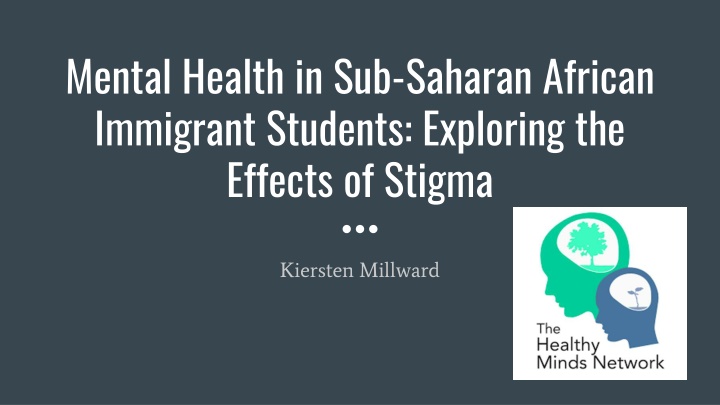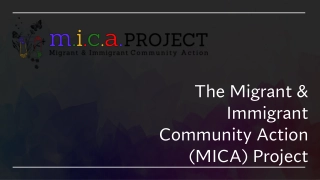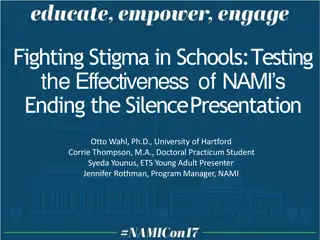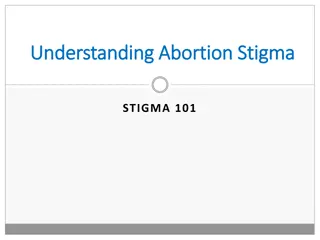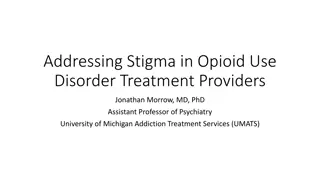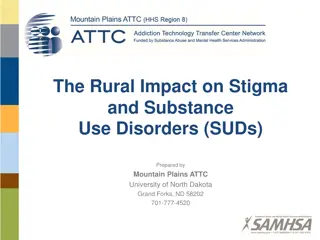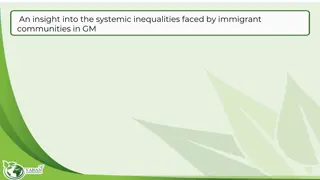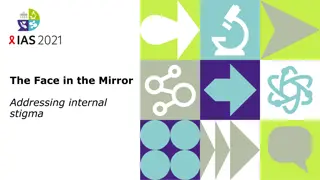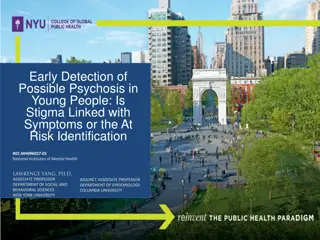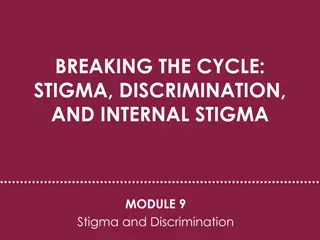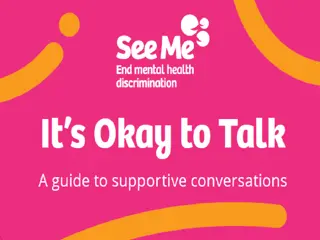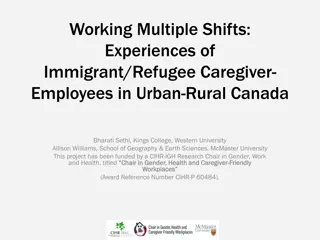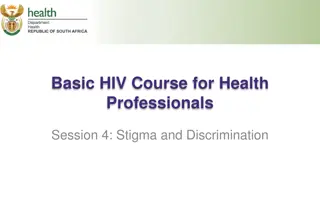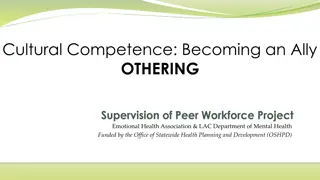Mental Health Stigma in SSA Immigrant Students
Many studies on mental health stigma in SSA populations focused on HIV-affected individuals. This study explores stigma effects on mental health, focusing on SSA immigrant students, assessing perceived stigma, unhealthy days, suicidality, and barriers to care. Data from 723 SSA students were analyzed, revealing insights into their experiences with mental health issues and treatment-seeking behaviors.
Download Presentation

Please find below an Image/Link to download the presentation.
The content on the website is provided AS IS for your information and personal use only. It may not be sold, licensed, or shared on other websites without obtaining consent from the author.If you encounter any issues during the download, it is possible that the publisher has removed the file from their server.
You are allowed to download the files provided on this website for personal or commercial use, subject to the condition that they are used lawfully. All files are the property of their respective owners.
The content on the website is provided AS IS for your information and personal use only. It may not be sold, licensed, or shared on other websites without obtaining consent from the author.
E N D
Presentation Transcript
Mental Health in Sub-Saharan African Immigrant Students: Exploring the Effects of Stigma Kiersten Millward
Background Many studies looking at perceived stigma and mental health in sub-Saharan African (SSA) populations have been limited to examining stigma in HIV-affected populations. Stigma involves discrimination against and negative attitudes towards a distinguishing characteristic, such as mental illness. Mental health is an increasing concern among college students. Between March and May of 2020, the Healthy Minds Study reported a prevalence of 40.9% for depression among college students (Healthy Minds Network, 2020).
Background (continued) Although trends in mental health service utilization among college students are generally on the rise, the number of college students who had utilized mental health care treatment in the last year was 34% in 2017 (Lipson et al., 2018). Examining how stigma affects SSA students is essential to understanding treatment-seeking behaviors and academic success among the population.
Objectives Examine how SSA students perceive stigma surrounding mental health. Assess the relationship between personal perceived stigma and mentally unhealthy days among SSA students. Assess the relationship between perceived stigma and suicidality among SSA students. Examine the relationship between personal perceived stigma and barriers to receiving mental health care among SSA students.
Data and Inclusion Criteria Data on SSA students (n=723) was obtained from the 2016-2019 cycles of the Healthy Minds Network (HMN), an annual online survey conducted on US university campuses. Inclusion Criteria: Born in sub-Saharan Africa and enrolled as an undergraduate or graduate student at the time of the survey.
Measures: Dependent Variables Number of unhealthy days was determined by reported data from the following question: In the past 4 weeks, how many days have you felt that emotional or mental difficulties have hurt your academic performance? Suicidality was determined through agreement with the following question: In the past year did you ever seriously think about attempting suicide? Mental health care seeking behavior was defined by response to the following questions: Received Therapy?: Have you ever received counseling or therapy for mental health concerns
Measures: Dependent Variables (Continued) Perceptions of mental health care was determined through the following questions: Medication: How helpful on average do you think medication is, when provided competently, for people your age who are clinically depressed? Therapy: How helpful on average do you think therapy or counseling is, when provided competently, for people your age who are clinically depressed?
Measures: Independent Variable Perceived Stigma of Mental Health Treatment was determined through agreement with the following statement: Most people think less of a person who has received mental health treatment.
Key Results: Descriptive Over half of the SSA students in the sample (60%) were male with a mean age of 25.7 (SD 8.2) 40% of the sample agreed with the statement Most people think less of a person who has received mental health treatment. Almost 80% of students expressed not receiving counseling or treatment for mental health concerns. Over 35% of students had experienced over 3 mentally unhealthy days in the past 2 weeks.
Key Results: Multivariate In multivariate models, students who reported having 6 or more mentally unhealthy days in the past four weeks were 3 times more likely to agree with the perceived stigma statement Students who had seriously thought about suicide in the past year were 3.64 times more likely to agree with the perceived stigma statement. Students who felt that medication for those who are clinically depressed is helpful were almost 2.5 times more likely to agree with the perceived stigma statement.
Discussion Students with serious mental health concerns, such as contemplating suicide and having 6 or more mentally unhealthy days recently, were more likely to stigmatize treatment for mental health. These findings highlight how prevention of poor mental health in SSA students must focus on destigmatizing mental health treatment. Stigma prevention interventions that tailor to SSA students and their beliefs should be developed to improve mental health in this group.
